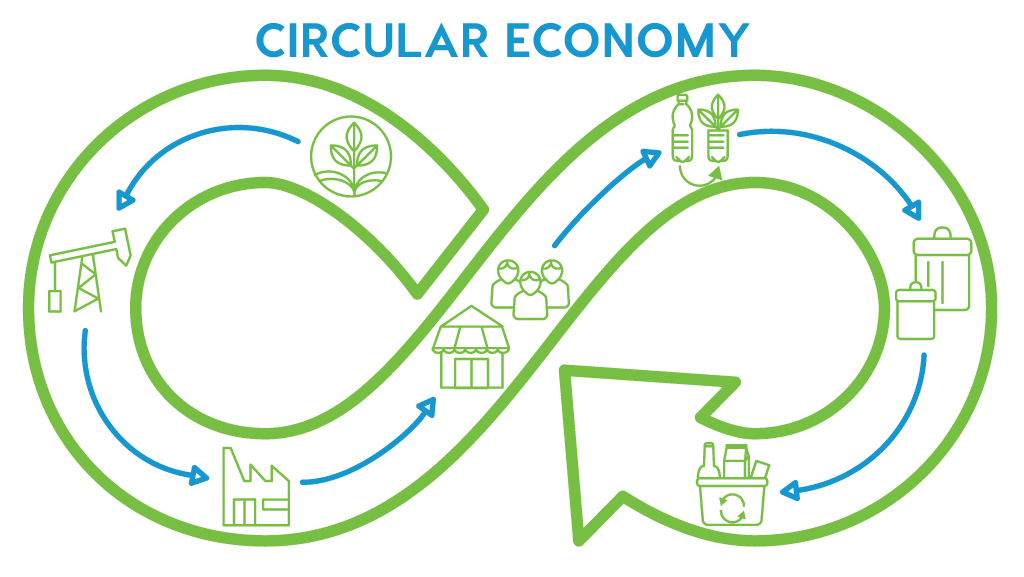6/7
What is the Circular Economy and How Do Plant-based Materials Fit In?
When it comes to plant-based products, there are a lot of questions with hard-to-find answers. The industry is full of innovation and scientific advancements – new products and processes are invented every day. This progress is exciting, but at the same time can lead to a lot of unknowns and misinformation as the community develops even more solutions.
Setting the Record Straight with PBPC aims to clear up many of the questions about plant-based materials. In this series, we’ll examine some common misconceptions about products made from plants, provide clear definitions for commonly used terms, and set the record straight on plant-based products.
How are plant-based materials part of a circular economy?

The “circular economy” is becoming a commonly used term. Many consumer brands and companies have pledged to implement programs and practices to embrace the concept of circular economy. But what does that mean?
The circular economy aims to eliminate waste and extend the useful life of products and materials, all while reducing our reliance on non-renewable resources. The Ellen MacArthur Foundation bases the circular economy on three principles:
- Design out waste and pollution
- Keep products and materials in use
- Regenerate natural systems
To achieve this, a circular economy encourages the use of renewable resources for energy, chemicals, and materials, and keeps them in use longer, meaning instead of becoming garbage or pollution, products are reused, repurposed, or recycled. As a key part of the circular economy, renewable inputs help achieve this goal and “not only protect, but actively improve the environment,” according to the Ellen MacArthur Foundation.
How does greater development and use of products made from plants serve as an important component of a circular economy?
We start with the renewable feedstocks they’re made of, like algae, corn, bamboo, hemp, and more. These feedstocks are converted into materials like bio-based plastic resins or renewable chemicals, which are in turn used to make everything from household cleaners to cosmetics, durable goods like furniture and building materials, and even single use products like food packaging and medical supplies. Many plant-based products are recyclable or compostable, beginning the process again. The below graphic illustrates feedstocks in the circular economy at work!
How does composting fit in?
Working to create more renewable products at market scale and advocating for policies to ensure that these products play a role in the circular economy can help reduce greenhouse gas emissions, improve water quality, enrich our soil, and curtail waste destined for landfills.
Composting is a great example of the circular economy at work. When food waste and compostable food service items are properly diverted to industrial composting facilities, they become valuable compost. That compost can be added to soil to grow new plants more sustainably. Those plants can be used to create new, green products.
